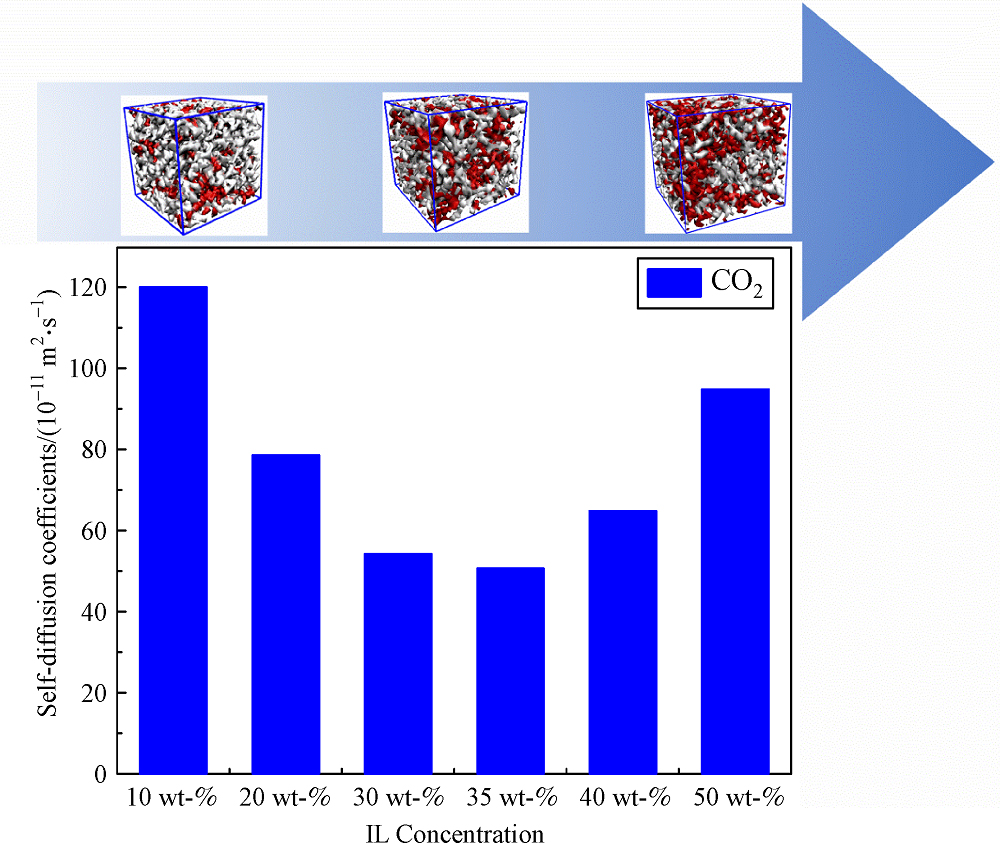The PMF values of CO
2 in [BMIM][Tf
2N]/PI at different IL concentrations were calculated. The WHAM [
29] was used to analyze the sampling results. The simulated histogram for calculating the PMF of CO
2 is displayed in Fig. S4 (cf. ESM). From Fig. S4, it could be found that every histogram was well crossed together, which indicated that the simulated PMF of CO
2 was reliable. Figure 11 shows the PMF of CO
2 in [BMIM][Tf
2N]/PI at different IL concentrations. It was clear that the positions of the lowest PMF of CO
2 for 10, 20, 30, 35, 40 and 50 wt-% IL are at approximately 0.40 nm. However, the first peak positions for PMF at different IL concentrations were different. Therefore, the free energy barrier obtained by the difference between the first valley and peak in the PMF was calculated and was then employed to study many systems [
49,
50]. The free energy barriers of CO
2 in [BMIM][Tf
2N]/PI with 10, 20, 30, 35, 40 and 50 wt-% IL were 3.68, 3.96, 4.36, 4.41, 4.32 and 4.30 kJ·mol
–1, respectively. When the IL concentration was lower than 35 wt-%, the order of the free energy barrier for CO
2 at different IL concentrations was 10 wt-% IL<20 wt-% IL<30 wt-% IL<35 wt-% IL. However, when the IL concentration was higher than 35 wt-%, the sequence of the free energy barrier for CO
2 at different IL concentrations was 50 wt-% IL<40 wt-% IL. It is well known that when the free energy barrier is low, gas molecules will need less energy and can be more easily transported in the membrane. Therefore, it could be concluded that when the IL concentration was less than 35 wt-%, the sequence of CO
2 passing through the IL/PI membrane at different IL concentrations was 10 wt-% IL>20 wt-% IL>30 wt-% IL>35 wt-% IL. However, when the IL concentration was more than 35 wt-%, CO
2 was easier to diffuse in the IL/PI system at 50 wt-% IL than that at 40 wt-% IL.














